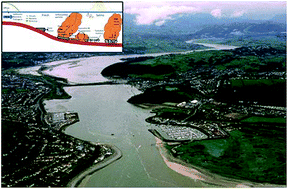The interaction of human microbial pathogens, particulate material and nutrients in estuarine environments and their impacts on recreational and shellfish waters
Abstract
Anthropogenic activities have increased the load of faecal bacteria, pathogenic viruses and nutrients in rivers, estuaries and coastal areas through point and diffuse sources such as sewage discharges and agricultural runoff. These areas are used by humans for both commercial and recreational activities and are therefore protected by a range of European Directives. If water quality declines in these zones, significant economic losses can occur. Identifying the sources of pollution, however, is notoriously difficult due to the ephemeral nature of discharges, their diffuse source, and uncertainties associated with transport and transformation of the pollutants through the freshwater–marine interface. Further, significant interaction between nutrients, microorganisms and particulates can occur in the water column making prediction of the fate and potential infectivity of human pathogenic organisms difficult to ascertain. This interaction is most prevalent in estuarine environments due to the formation of flocs (suspended sediment) at the marine-freshwater interface. A range of physical, chemical and biological processes can induce the co-flocculation of microorganisms, organic matter and mineral particles resulting in pathogenic organisms becoming potentially protected from a range of biotic (e.g. predation) and abiotic stresses (e.g. UV, salinity). These flocs contain and retain macro- and micro- nutrients allowing the potential survival, growth and transfer of pathogenic organisms to commercially sensitive areas (e.g. beaches, shellfish harvesting waters). The flocs can either be transported directly to the coastal environment or can become deposited in the estuary forming cohesive sediments where pathogens can survive for long periods. Especially in response to storms, these sediments can be subsequently remobilised releasing pulses of potential pathogenic organisms back into the water column leading to contamination of marine waters long after the initial contamination event occurred. Further work, however, is still required to understand and predict the potential human infectivity of pathogenic organisms alongside the better design of early warning systems and surveillance measures for risk assessment purposes.

- This article is part of the themed collections: Editors Choice: Planetary Health and Macronutrient Cycles

 Please wait while we load your content...
Please wait while we load your content...